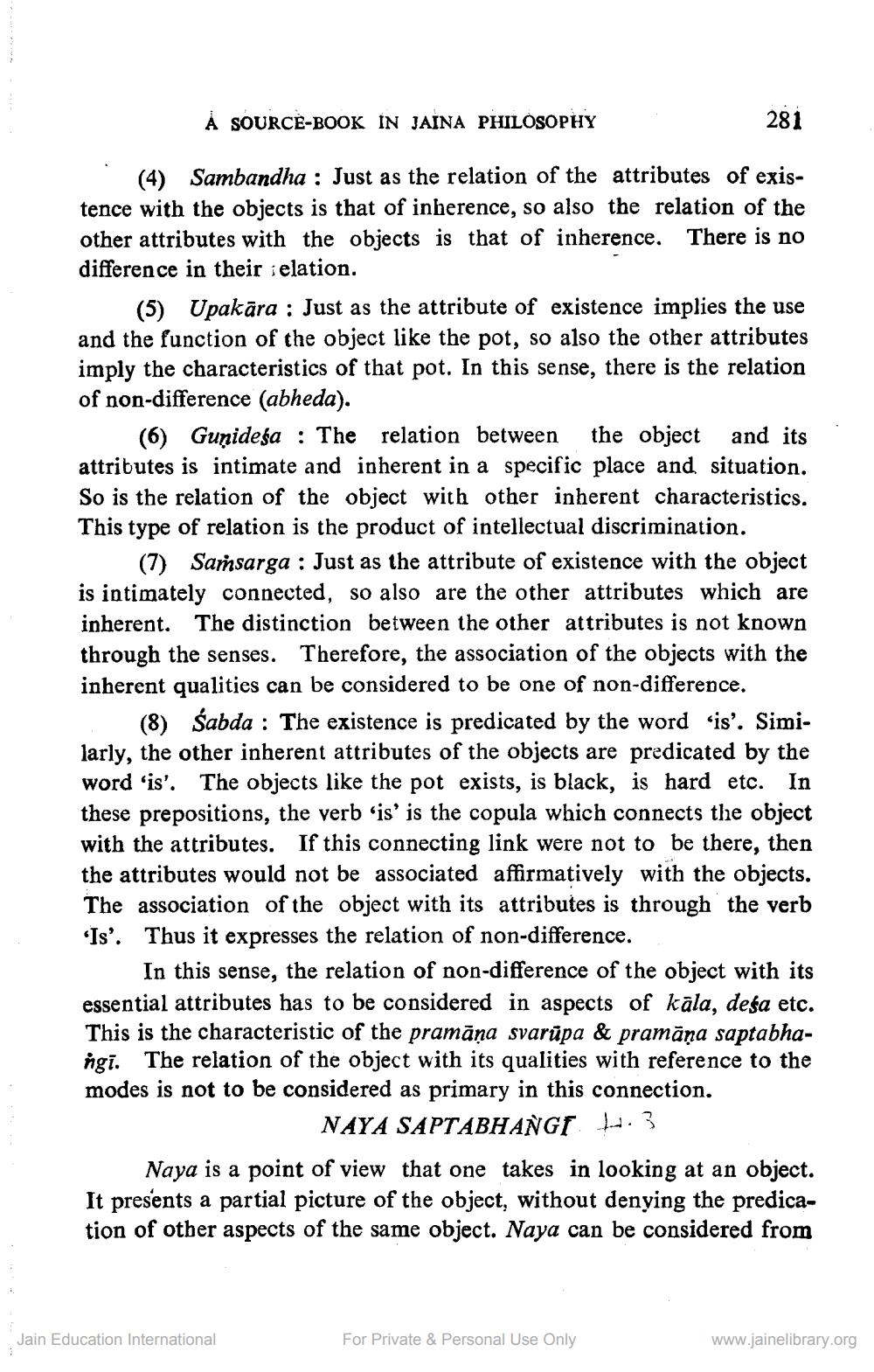________________
À SOURCE-BOOK IN JAINA PHILOSOPHY
281
(4) Sambandha: Just as the relation of the attributes of existence with the objects is that of inherence, so also the relation of the other attributes with the objects is that of inherence. There is no difference in their relation.
(5) Upakara: Just as the attribute of existence implies the use and the function of the object like the pot, so also the other attributes imply the characteristics of that pot. In this sense, there is the relation of non-difference (abheda).
(6) Gunidesa : The relation between the object and its attributes is intimate and inherent in a specific place and situation. So is the relation of the object with other inherent characteristics. This type of relation is the product of intellectual discrimination.
(7) Samsarga: Just as the attribute of existence with the object is intimately connected, so also are the other attributes which are inherent. The distinction between the other attributes is not known through the senses. Therefore, the association of the objects with the inherent qualities can be considered to be one of non-difference.
(8) Śabda: The existence is predicated by the word 'is'. Similarly, the other inherent attributes of the objects are predicated by the word 'is'. The objects like the pot exists, is black, is hard etc. In these prepositions, the verb 'is' is the copula which connects the object with the attributes. If this connecting link were not to be there, then the attributes would not be associated affirmatively with the objects. The association of the object with its attributes is through the verb 'Is'. Thus it expresses the relation of non-difference.
In this sense, the relation of non-difference of the object with its essential attributes has to be considered in aspects of kala, deśa etc. This is the characteristic of the pramāņa svarupa & pramāņa saptabhangī. The relation of the object with its qualities with reference to the modes is not to be considered as primary in this connection.
NAYA SAPTABHANGI
14.3
Naya is a point of view that one takes in looking at an object. It presents a partial picture of the object, without denying the predication of other aspects of the same object. Naya can be considered from
Jain Education International
For Private & Personal Use Only
www.jainelibrary.org




